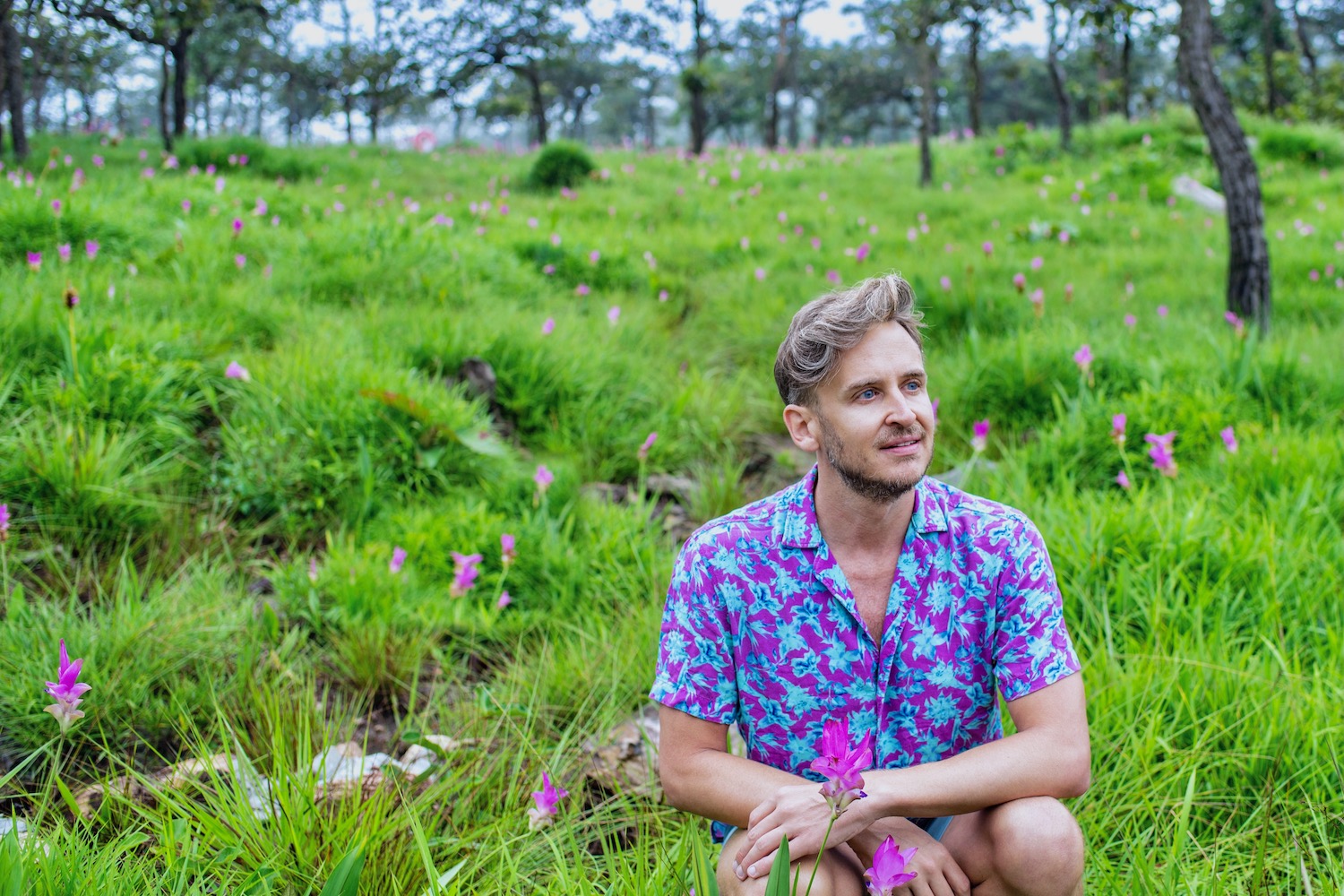Chanting blared from Wat Traimit, the so-called “Marble Temple” that towers over Bangkok’s Chinatown, but precisely zero worshippers were there to hear it. The sky to the west was black, like that new shade of black scientists recently developed. You know, the one that absorbs 99.9% of visible light.
And yet I was undeterred: I’d decided to visit Thailand in the rainy season with bells on. Not even a downpour like a black hole would be able to stop me.
Which is not to say that I was on any important mission, at least not at that particular moment. My photo expedition through a part of the city I know very well was an amuse-bouche, not to mention a refusal to succumb to my jet lag (I’d only arrived the day before).
Nor did the rain the sky eventually birthed live up to the warning its womb sent. The downpour lasted only a few minutes, which I spent under a sturdy awning fiddling with my camera settings.
If anything, it made me more excited, seeing the neon lights of Yaowarat Road reflected in the increasingly mirror-like asphalt.
Still, as mosquitoes bit my ankles (in my stupor, I’d forgotten to apply the DEET I’d bought as a condition of my trip during what is also dengue season), I wondered how well I’d really thought my decision through.
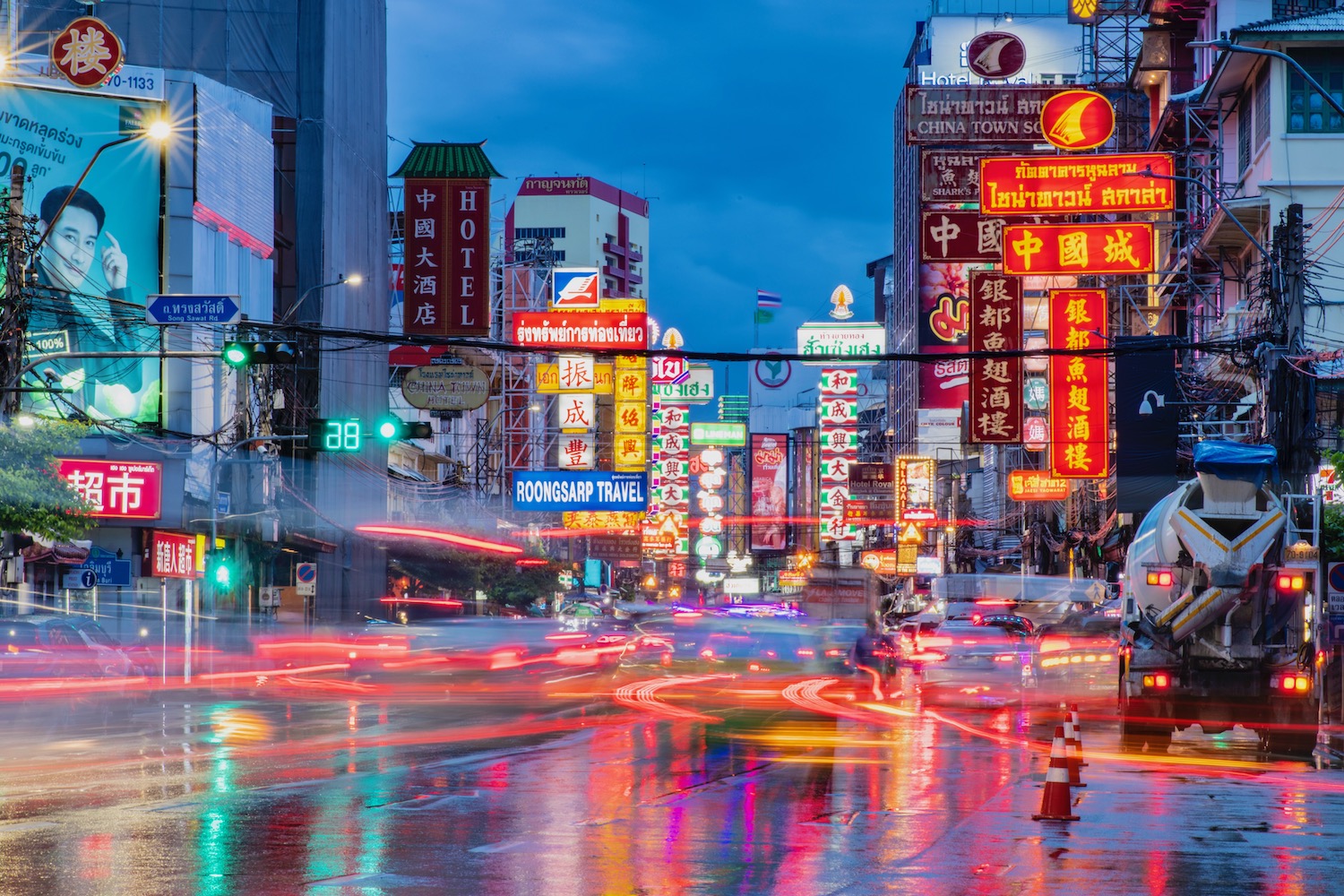
The next morning, killing time before an 11 AM departure from Don Mueang to Loei, in Thailand’s rural northeast, I doubled down on my doubt.
I’d formulated the general concept of visiting the obscure northeastern province without working out many of the details (because how hard could a place like that be to explore?); I realized with only hours to spare that I had made a mistake (among other mistakes) in having booked a hotel in the actual city of Loei.
As I walked out of my hotel to meet my car—a hotel I’ve stayed in so many times I’ve lost count—I noticed a sign by the front desk. “Hotel closing for renovations on August 1,” it said, without giving further information. “Thank you for your patronage.” (NOTE: It’s July 23 for the person writing this.)
The good news is that it took much less time to reach Bangkok’s redheaded stepchild airport than it usually does, which gave me an opportunity to right-size my travel plan.
Rather than staying in one place and driving as many as 12 hours per day to reach the two destinations that had inspired this trip in the first place (more on those places in a minute), I decided to make a counter-clockwise figure-eight through the region, and sleep roughly at the vertex of each lobe.
I was surprised, after collecting my local-model Toyota at Loei Airport (“It’s a brand new car,” the agent had insisted—it wasn’t), at how immediately the sense of the place enveloped me, even keeping in mind the expectation dramatic views of the lush, cloud-blanketed landscape from the plane had set.
Initially, it was the locals behind tented, scarlet tables selling fuchsia rambutans. Then it was the increasingly frequent “Elephant Crossing” signs. Then it was noticing just how deeply red the clay of the earth was—it was almost purple.
Looking out onto the countryside from Wat Somdet Phu Ruea, where monks had painted a boulder that was barely clinging to the hillside the temple was built on in brash, gold paint, the sky looked like it might open up at anytime, even if not a single drop had yet fallen.
As I made my way southward to the Dan Sai district, where I would be visiting a museum dedicated to Phi Ta Kon (a festival I’d just missed), I realized that the brightly-painted wooden masks evoked the Namahage of Japan’s Akita prefecture.
(The two, of course, have little in common semantically speaking. Phi Ta Kon is a Buddhist festival that honors ancestors; the Namahage are meant to scare bad children into behaving.)
It was around 3 PM by this point, and before long the rambutans had given way to dragon fruit; the ground cover as I made my way into Phetchabun province (which separates Loei from Chaiyaphum) was so thick that I could no longer see soil at all.
It ended up taking me nearly five more hours to reach my middle-of-nowhere motel, which if I’m honest made me question whether my itinerary revision had really been sensible. On the other hand, I was far too exhausted from the journey (and, more to the point, from lingering jet lag) to fret much about it.
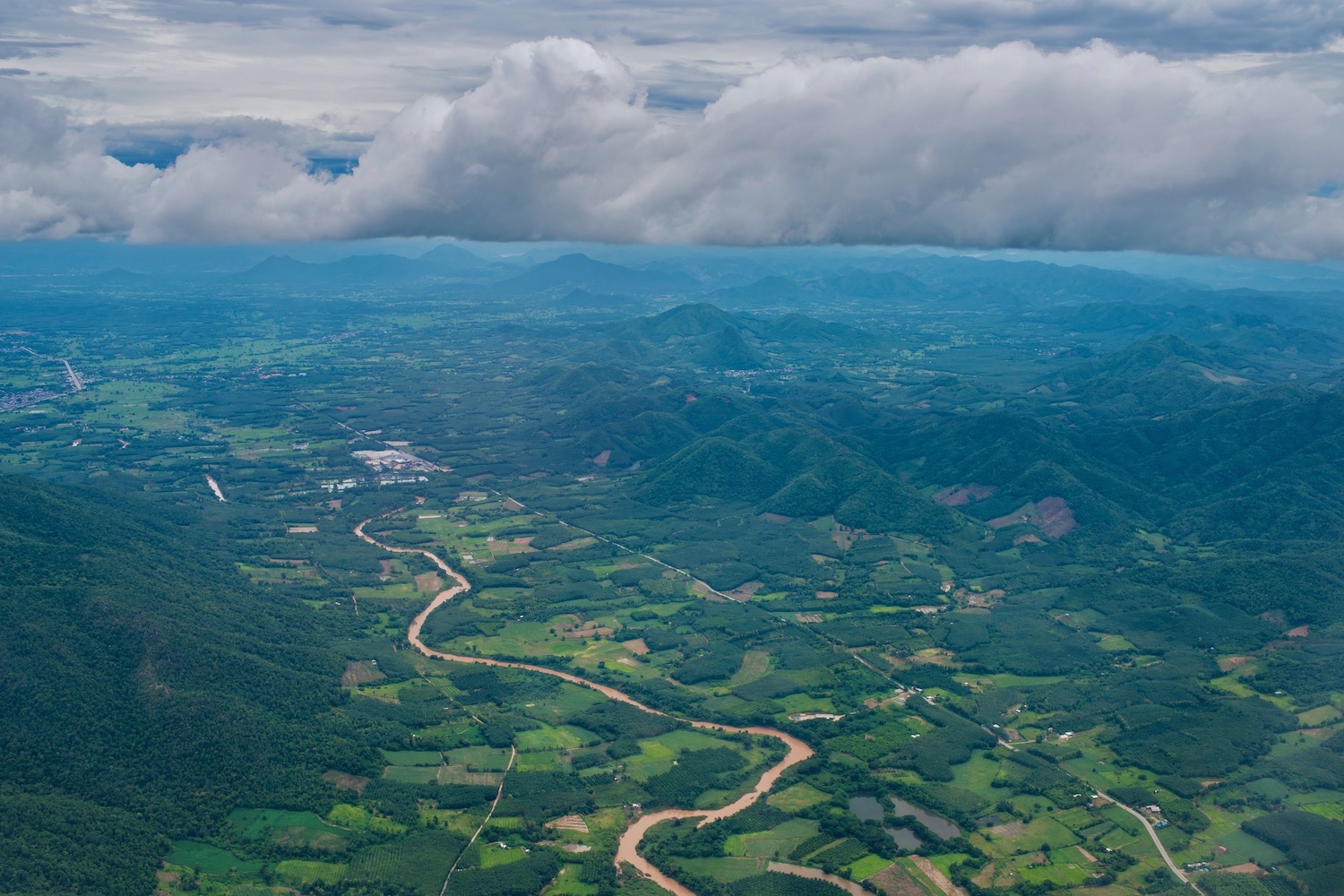
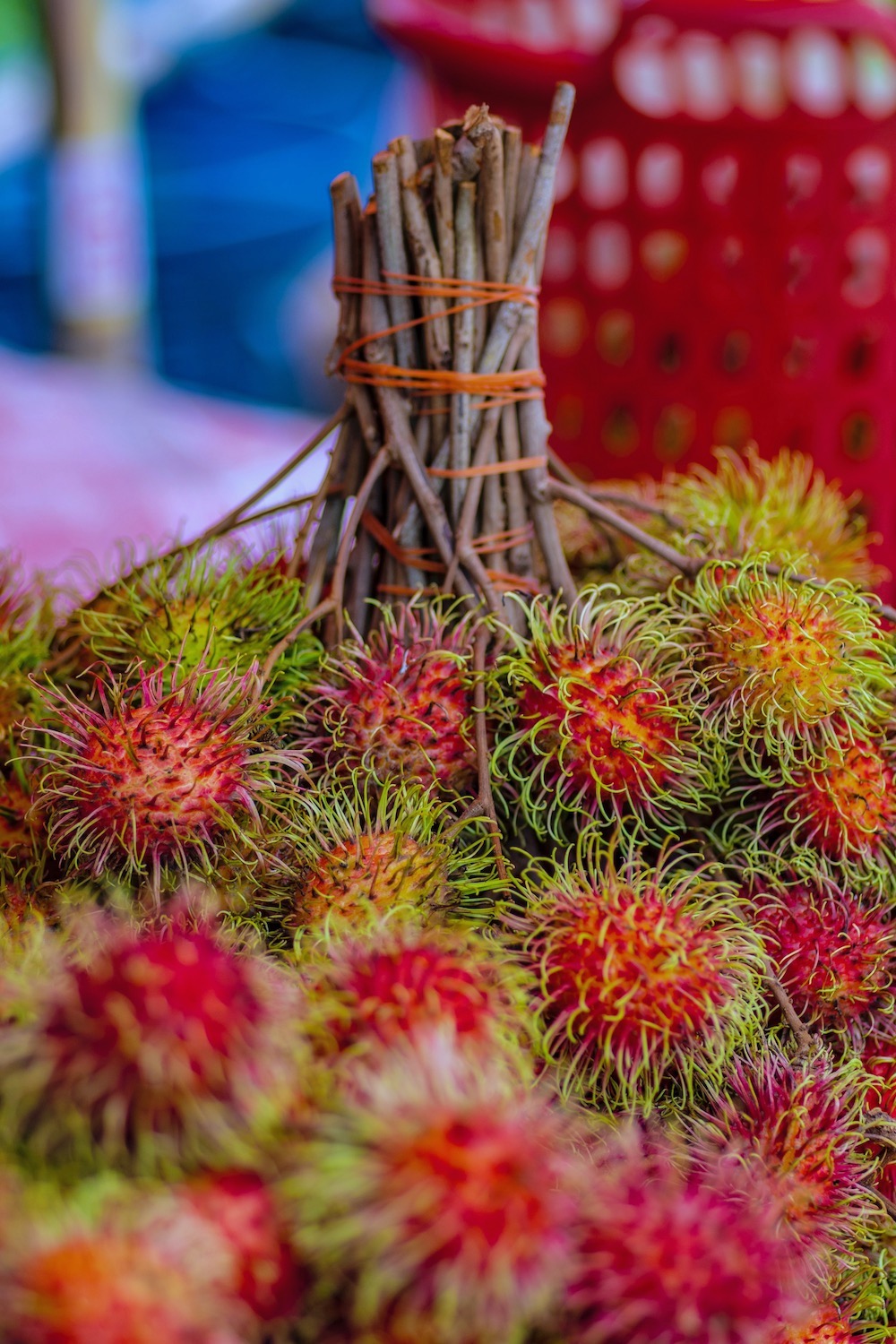
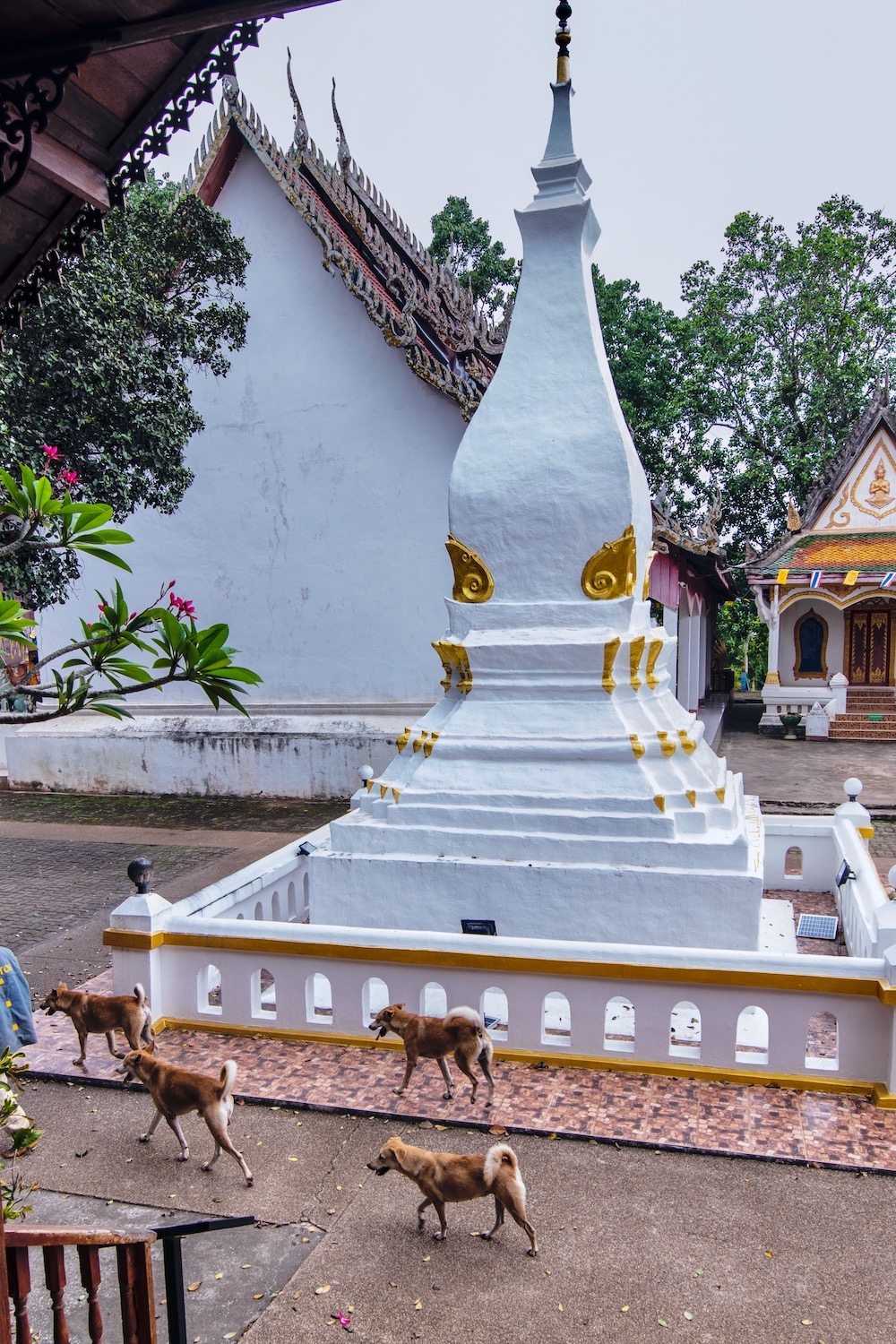

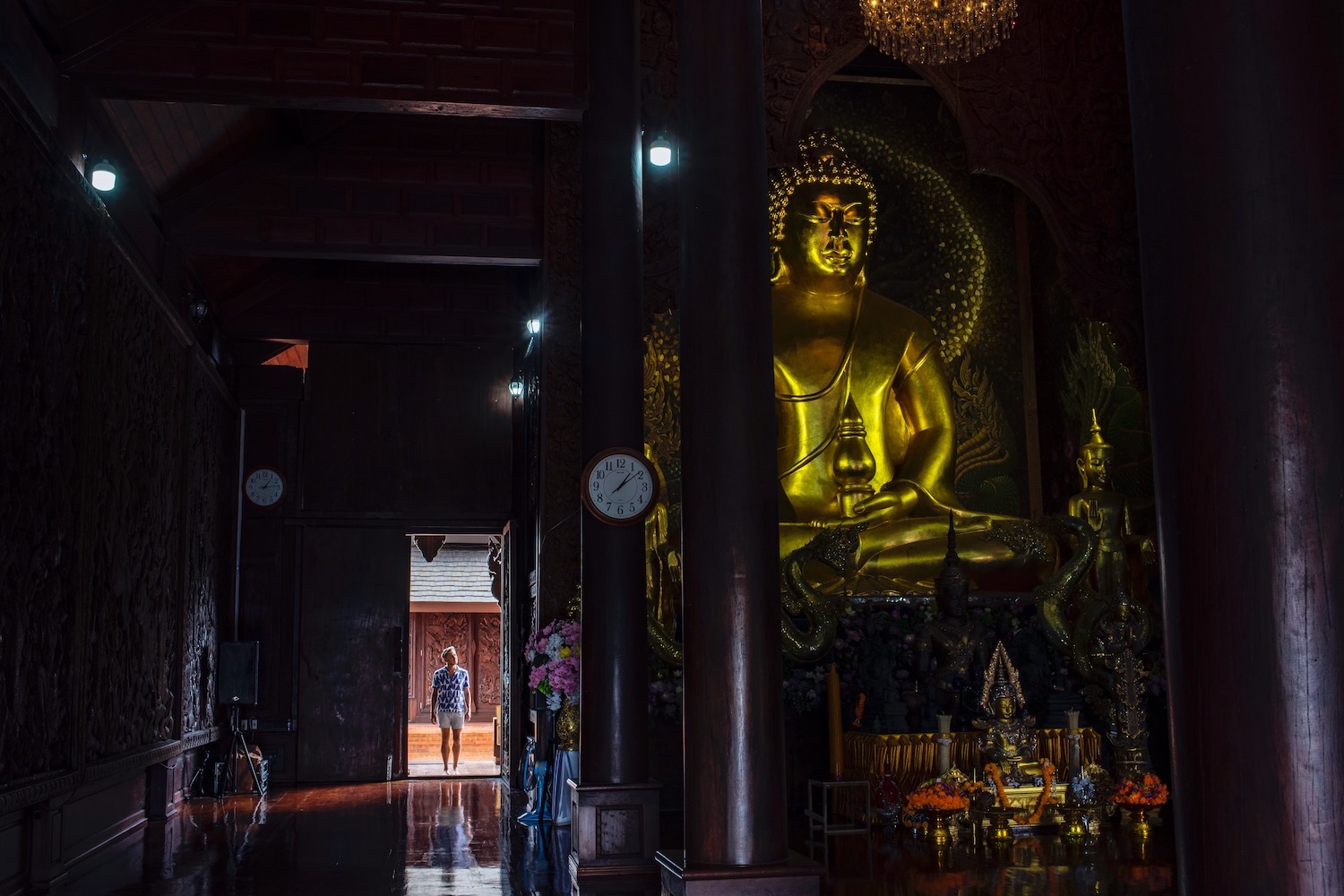
I’d noticed signs for the Dok Krachiao festival as the last light faded on my way into Chaiyaphum the previous evening, but I tried not to pay them any mind.
It had been too late, to be sure, for me to enter either of the national parks where the so-called Siam Tulips (which are actually a species of ginger) grew wild; I would have the entire first half of this day to enjoy them.
This, of course, was itself a confirmation that my last-minute rejiggering had been wise. It was just 40 minutes from my hotel to Pa Hin Ngam, the first of the two parks I’d be visiting. Had I stayed instead in Loei City, it’d have taken me five hours, at a minimum.
A few things surprised me upon my arrival at the park’s gate. First, that a car of local people (Thailand is a notoriously—and uniformly—tardy country) had beat me to it; and secondly, that the guard actually began admitting us a few minutes before 6 AM.
Getting out of my vehicle, it also shocked me that the temperature of the air matched the misty, mysterious landscape. It actually felt cold, and maybe not just by Thai standards.
Nevertheless, as the five of us (and the car after, which was carrying three people my parents’ age) boarded a Krachiao-painted tram bound for the flower fields, I tried not to dwell on it.
As the flowers started coming into view, however, I did wonder whether the sweater polo I’d purpose-bought for the occasion (in a solid purple-pink color) had been mis-calibrated. It wasn’t a big deal—I had a patterned pink-purple shirt as a back-up in my bag), but it distracted me from the goosebumps forming on my leg, so I considered it a win.
Disembarking the vehicle, I noticed the earth as much as the flowers growing out of it. Unlike the colorful clay up in Loei, this dirt was a deep black brown; the strong smell of it was intoxicating.
The only thing I didn’t like about the place was the confusing signage. In spite of beckoning me to go one way (on Thai as well as in English), all the rest of the people (who were all Thai) there went the other.
This all faded away, of course, as soon as I found myself on a boardwalk build directly through the thickest field of flowers—Scarlet’s walk through the proverbial violets. What’s funny is that while the second place I saw the Krachiao (Sai Thong National Park) was on the whole more rural and less developed, the signage issues were similar.
(Albeit funnier in the latter case, when one sign informed me that the third of three pastures was a whopping 300 km away, nearly as far as Bangkok).
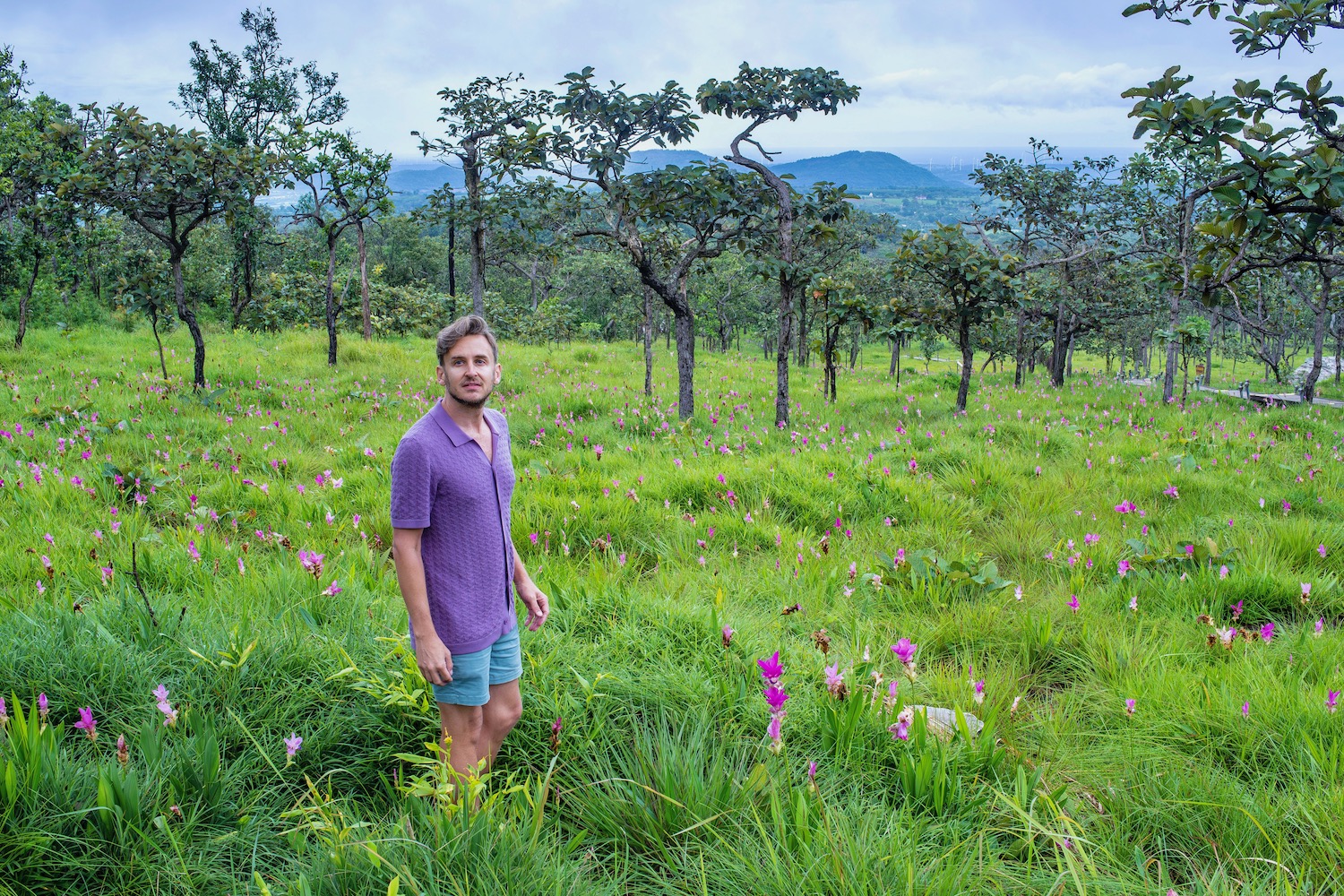
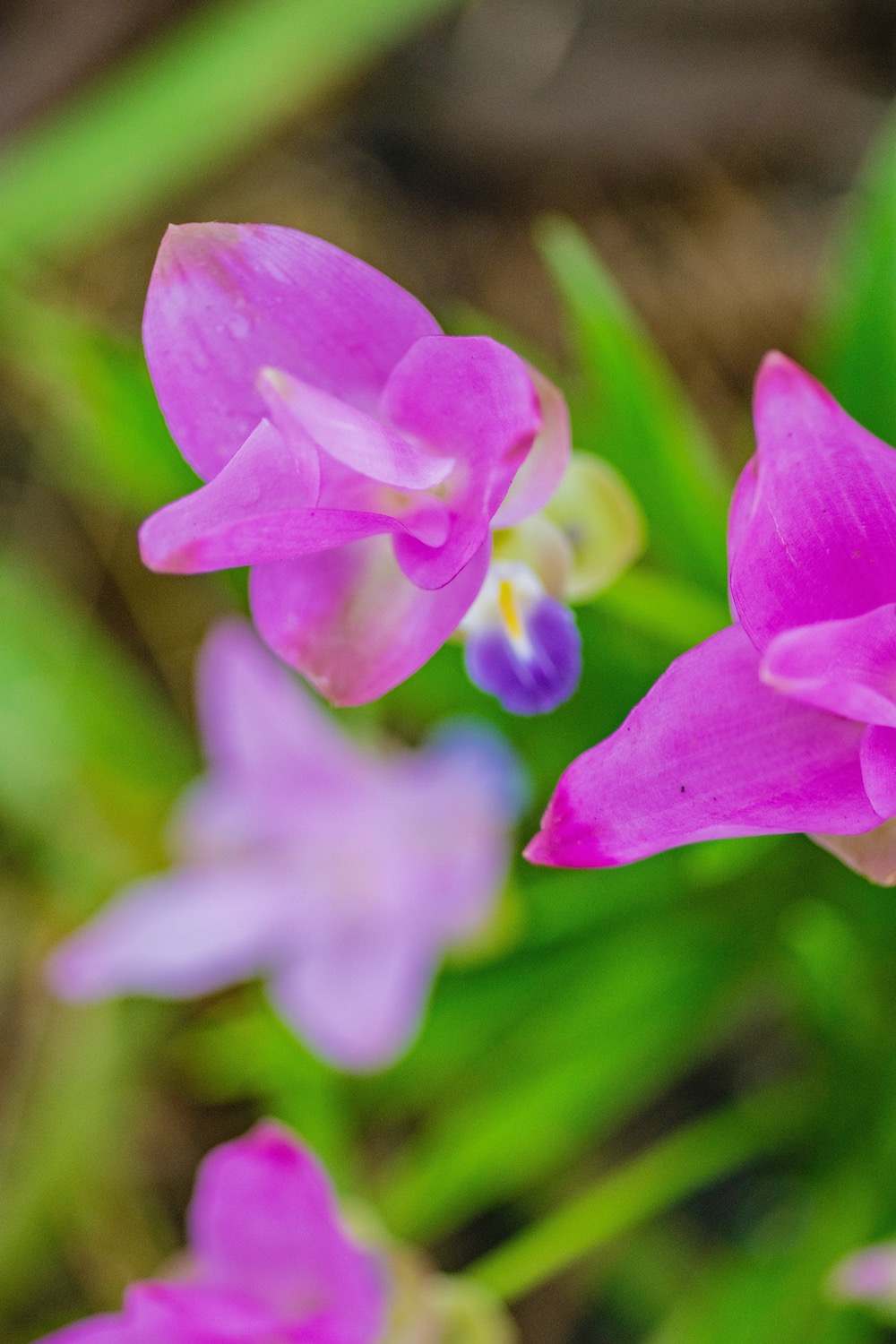
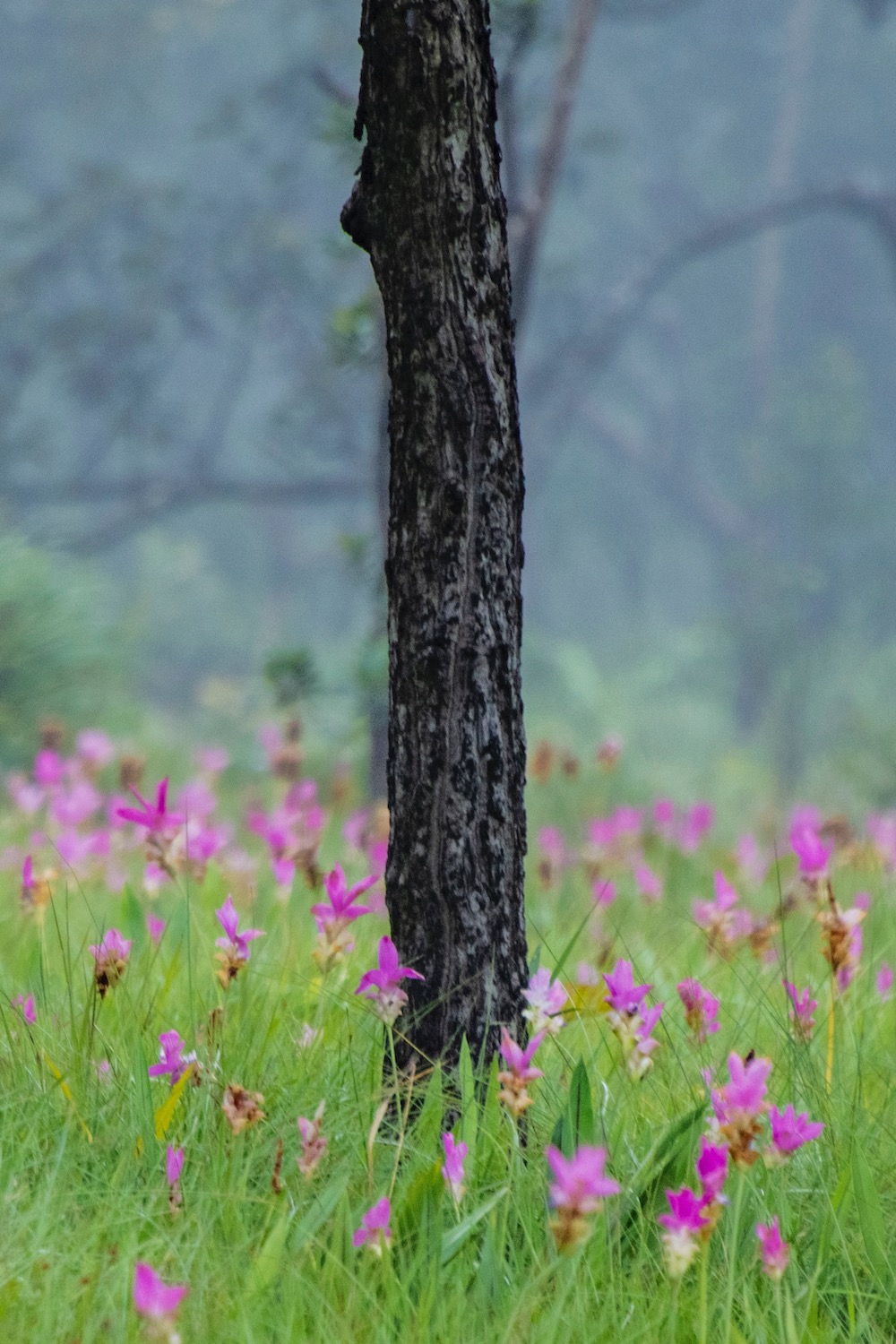
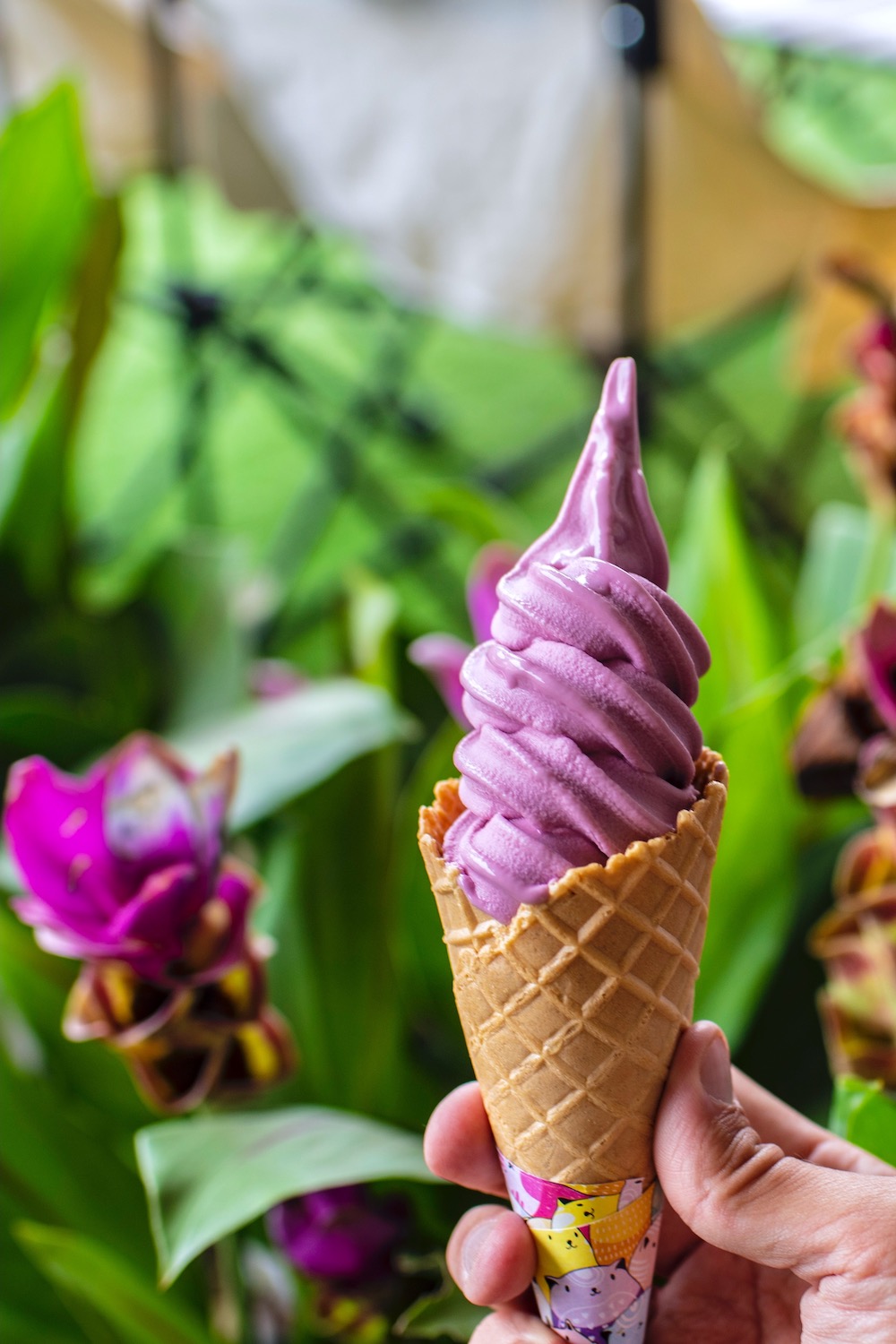
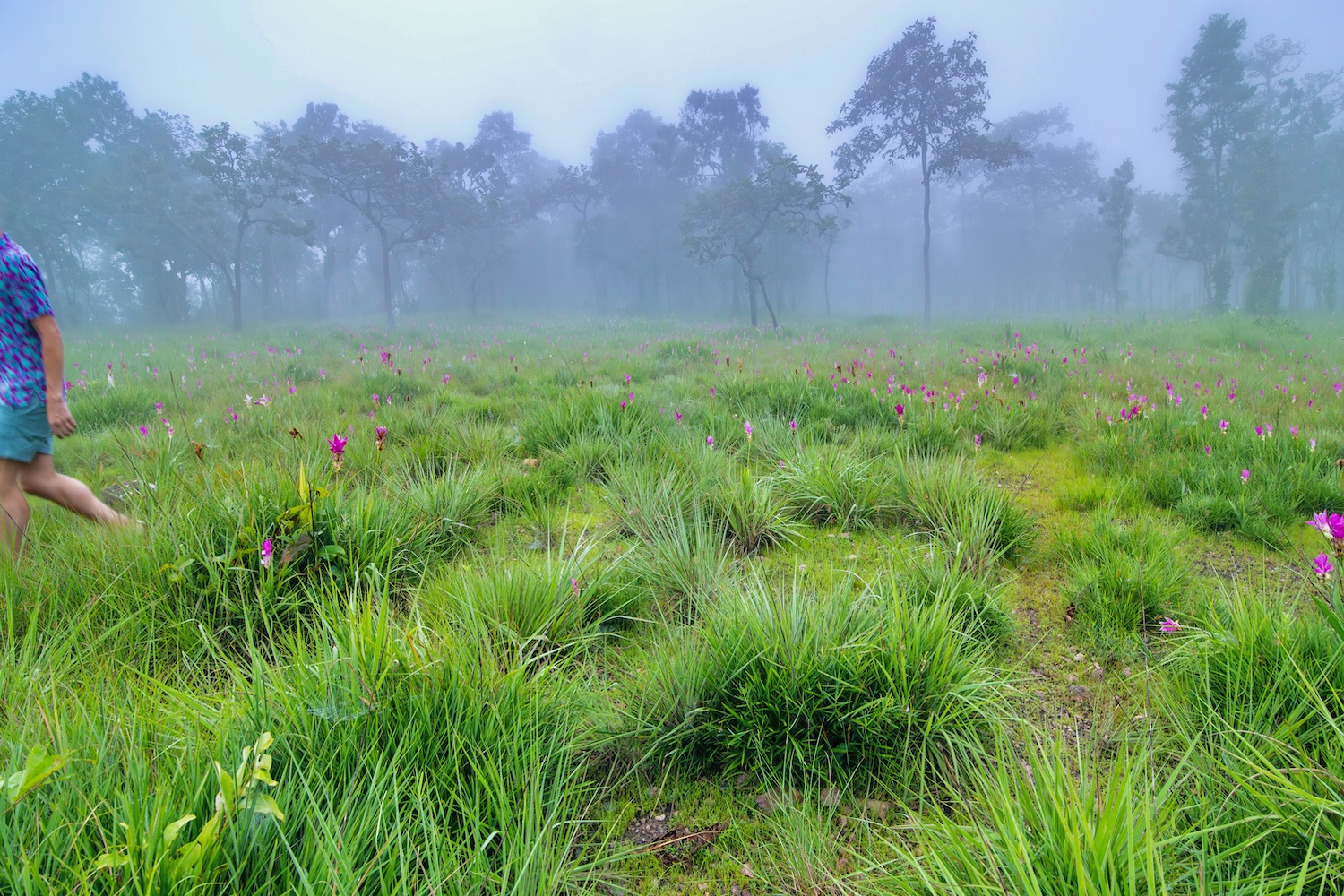
As had been the case 24 hours earlier, I had to devote the afternoon mostly to transit: Chiang Khan, the riverside town where I’d ben sleeping, was around five hours away.
On the other hand, heavy rain outside my car (the clouds finally made good on their threats, albeit an entire day later) meant that I had no FOMO; I was thankful to be confined.
Chiang Khan itself made a strange impression. Visually, it evoked both nearby Thai town of Nong Khai and the not-so-close city of Luang Prabang, Laos; this made sense, if only because the Mekong snaked through all three.
The situation here was sadder, somehow. There were dozens of guest houses and hotels; although I recognized that the rainy season necessarily meant fewer visitors, it was difficult for me to imagine the critical mass of tourists needed to make the town’s Walking Street feel alive.
The looks on the faces of the people staffing the empty accommodations, which ranged from curiosity to scorn, seemed to back this up.
I walked from my lodging (which was at the far eastern end of the town) all the way west to the only highly-rated restaurant tnhat was open just past 4 PM; after my meal of fried larb and tom yam soup made with locally-caught catfish, I made my way back slowly enough that night had started to fall by the time I got “home.”
Just before I went back inside, I noticed a single local person dressed in a Phi Ta Kon costume, with a tip jar in front of him or her (the ghost’s gender was not clear from the way they moved, which I guess was the point).
I dropped in a 20-Baht bill; it danced exuberantly to the fuzzy music blaring out of its cellphone, seemingly playing it up for my camera. It was an artificial scene, but somehow also an authentic one.
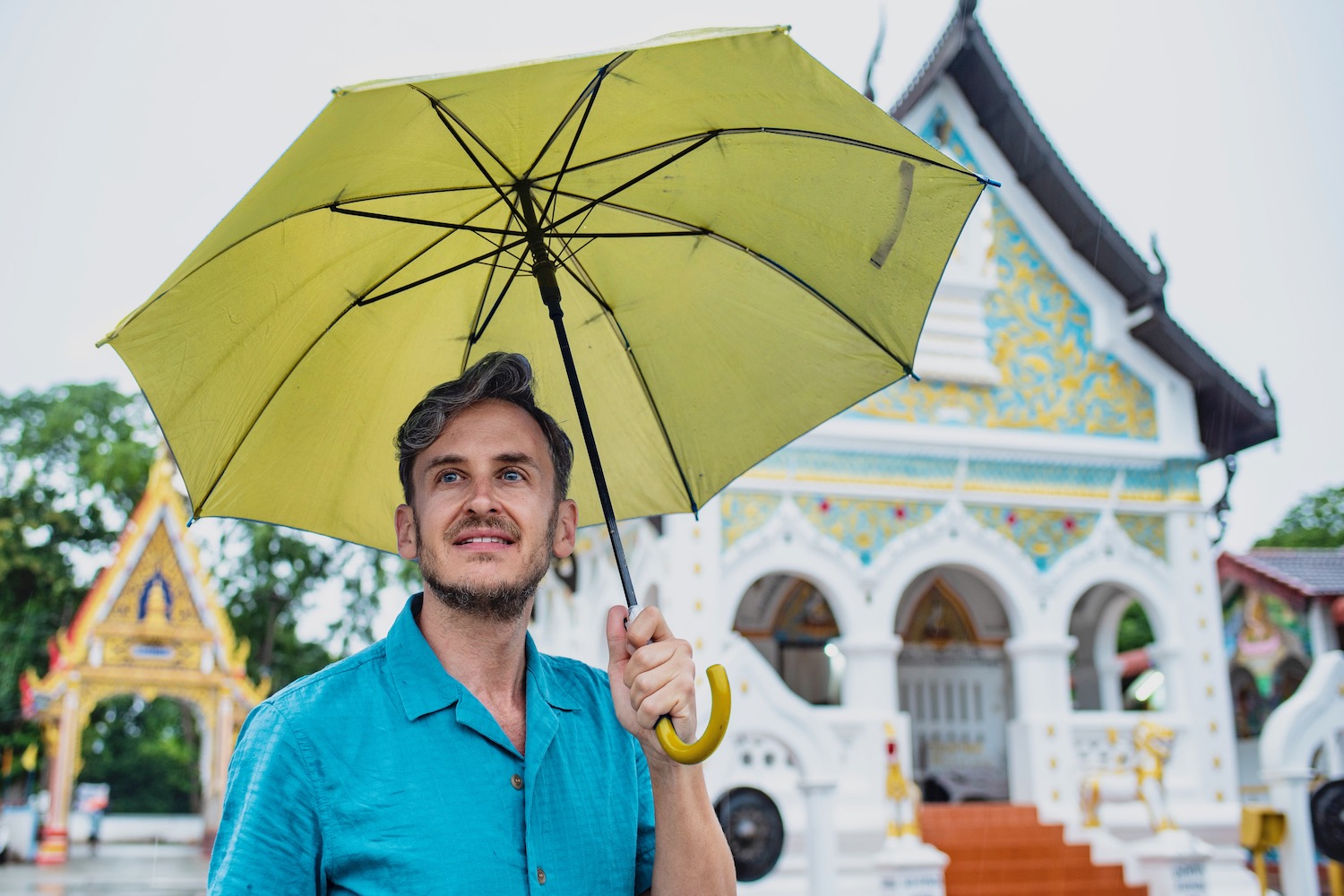
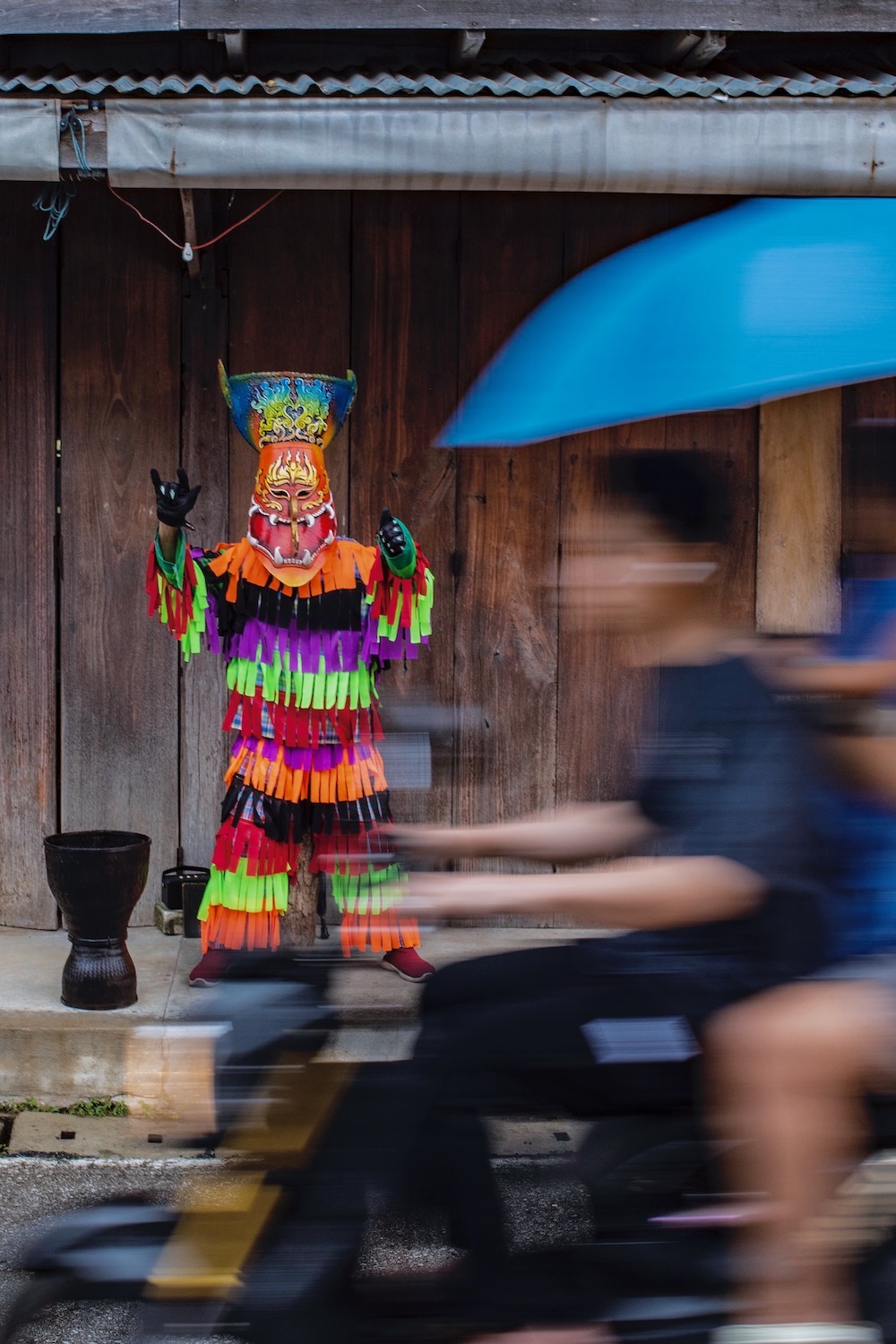

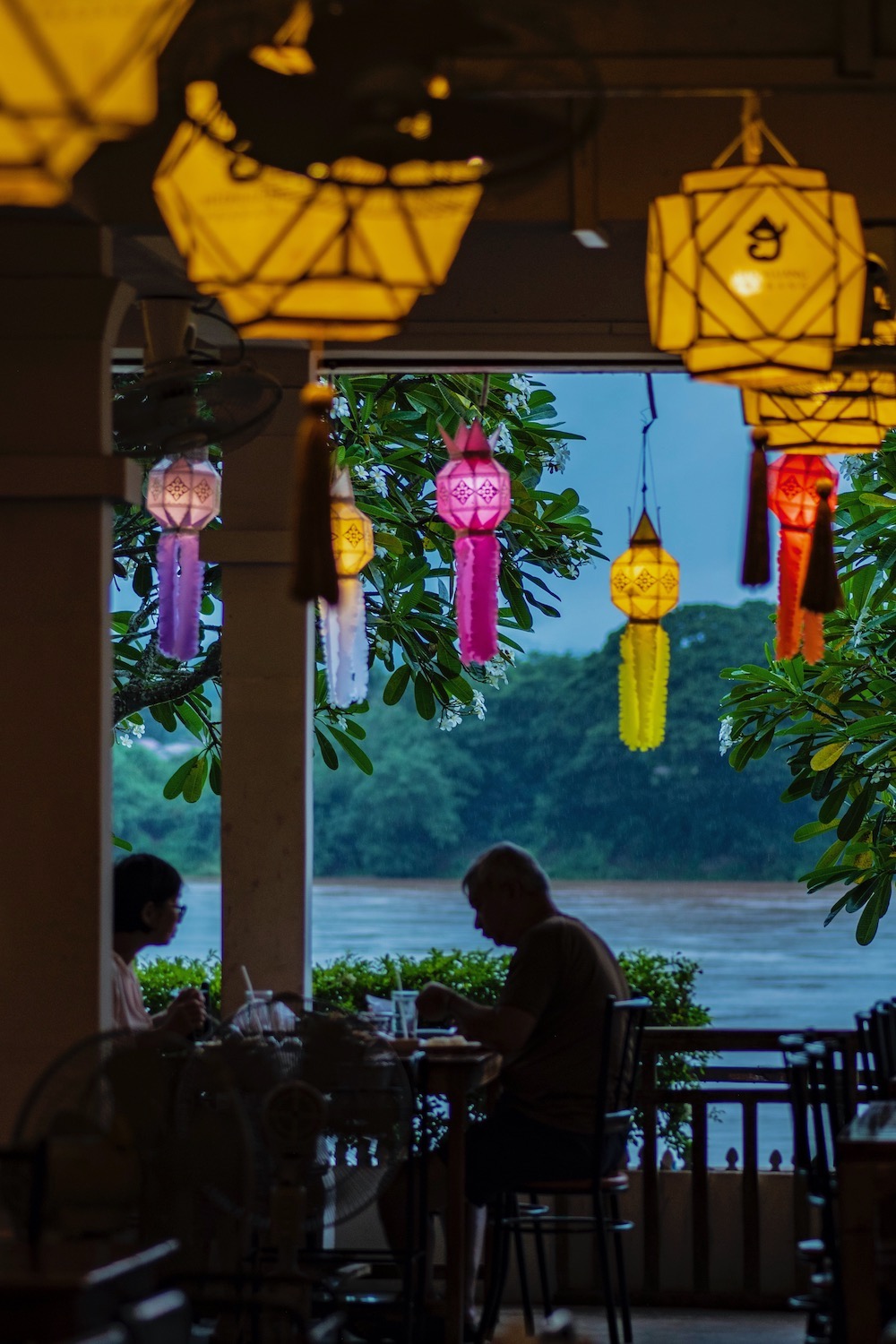

Emerging from my hotel after the first truly satisfying sleep of my trip, I was surprised by how steady the rain was: Less than a downpour, more than a drizzle. Even the image of Naga snaking down the stairs to the water seemed to have had enough of it.
Importantly, I wondered whether the morning alms procession would even take place. My hotel’s owner, who came to visit me across the street at breakfast to see how I liked it, seemed certain. “But you should finish eating now—they’ll be coming soon.”
Sure enough the monks, many of whom carried rainbow umbrellas that gave the scene an almost surreal look, made their rounds. This wasn’t as elaborate as the daily ceremony in Luang Prabang; it also didn’t feel as contrived.
Their persistence—the monks’, this is—ended up foreshadowing the sort of energy I’d need to bring to my day: Visiting the Chiang Khan Skywalk, in spite of of the weather meaning there wasn’t much of a view, and that the skywalk itself (which was glass) was off limits.
Stopping at the so-called “Black Thai” cultural village to find not a single Thai person (black or otherwise), but an angry soi dog who seemed content to attack if I spent even a second longer than than I should.
These were waypoints, of course. I was bound, you see, for the second place that had inspired me to visit this part of Thailand in the first place. Or the second place, as it were.
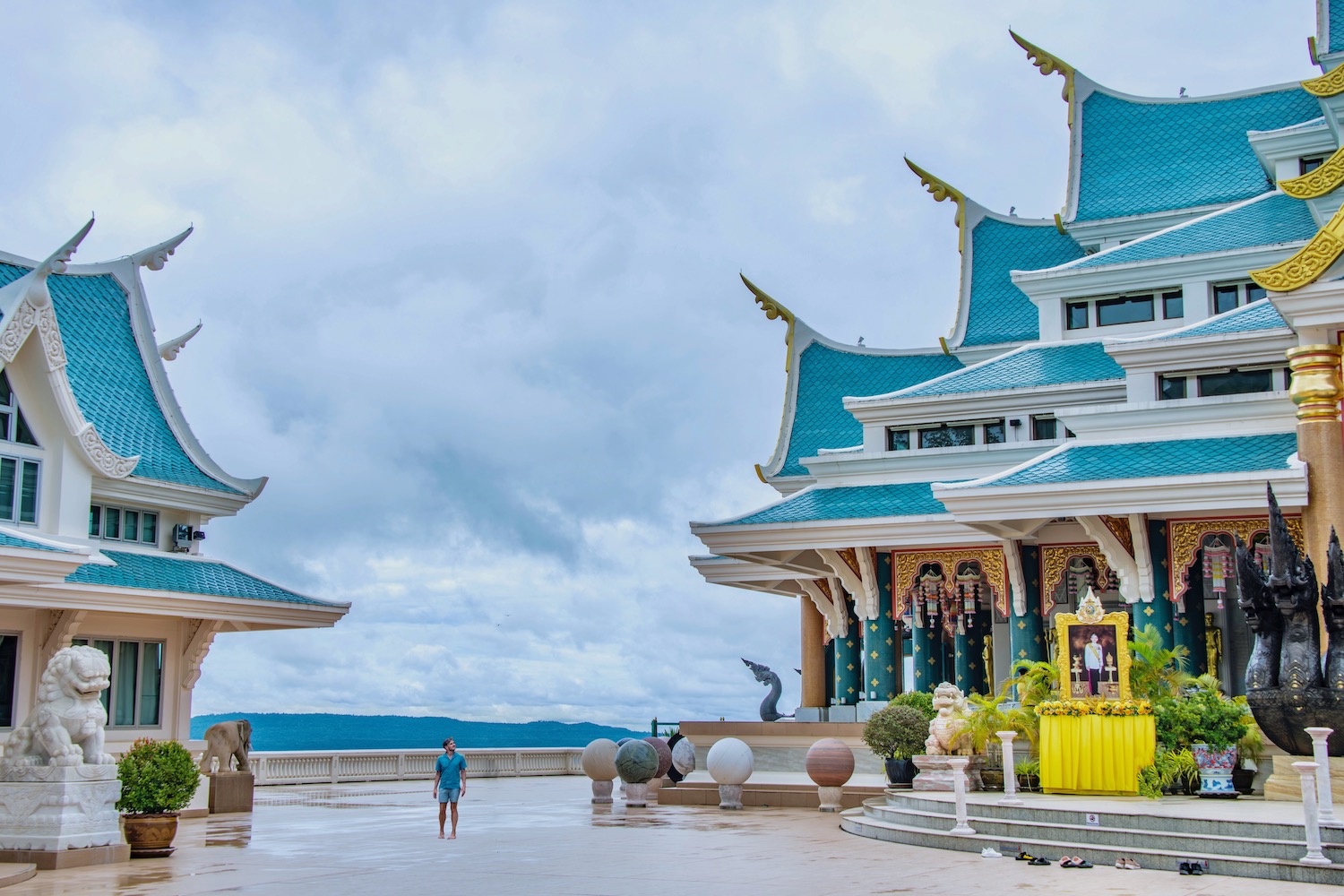
On my 2022 trip through Isaan, which was at the time my most extensive, my now-husband and I had spent a lot of time in Udon Thani province, seeing almost everywhere on both our lists.
Well, with one exception: The so-called “Blue Temple” (named on account of its roof, which is actually turquoise) at Wat Pa Phu Khon.
Unfortunately, like so many of the seemingly most impressive places in Thailand (I’m thinking in particular about Wat Thang Sai in Prachuap Khiri Khan province), it is only impressive when seen for a drone. Or at least it would be, if they weren’t prohibited.
And it’s a prohibition I could only assume would be enforced—assuming, I mean, that I had a drone—given how insistent the temple’s staff were that I covered my knees (which were barely exposed) with unsightly linen pants at least half a dozen sizes too big for me.
I sound bitter, but I’m not: My trip, as is almost always the case, was more than the sum of its parts; the figure-eight I made through northeastern Thailand literally suggests infinity. Nonetheless, I returned to Bangkok (I hadn’t bothered checking out of my hotel) relieved that I was back.
That is, until the sign reminded me of the sad reality awaiting my hotel. And an offhand remark illuminated the human impact it would soon have.
“Some of the staff,” the receptionist (who was by the far the kindest person I’d dealt with on my many stays at this hotel) answered when I asked him whether the company would ensure everyone got jobs at sister properties during the renovation period. “But not me.”
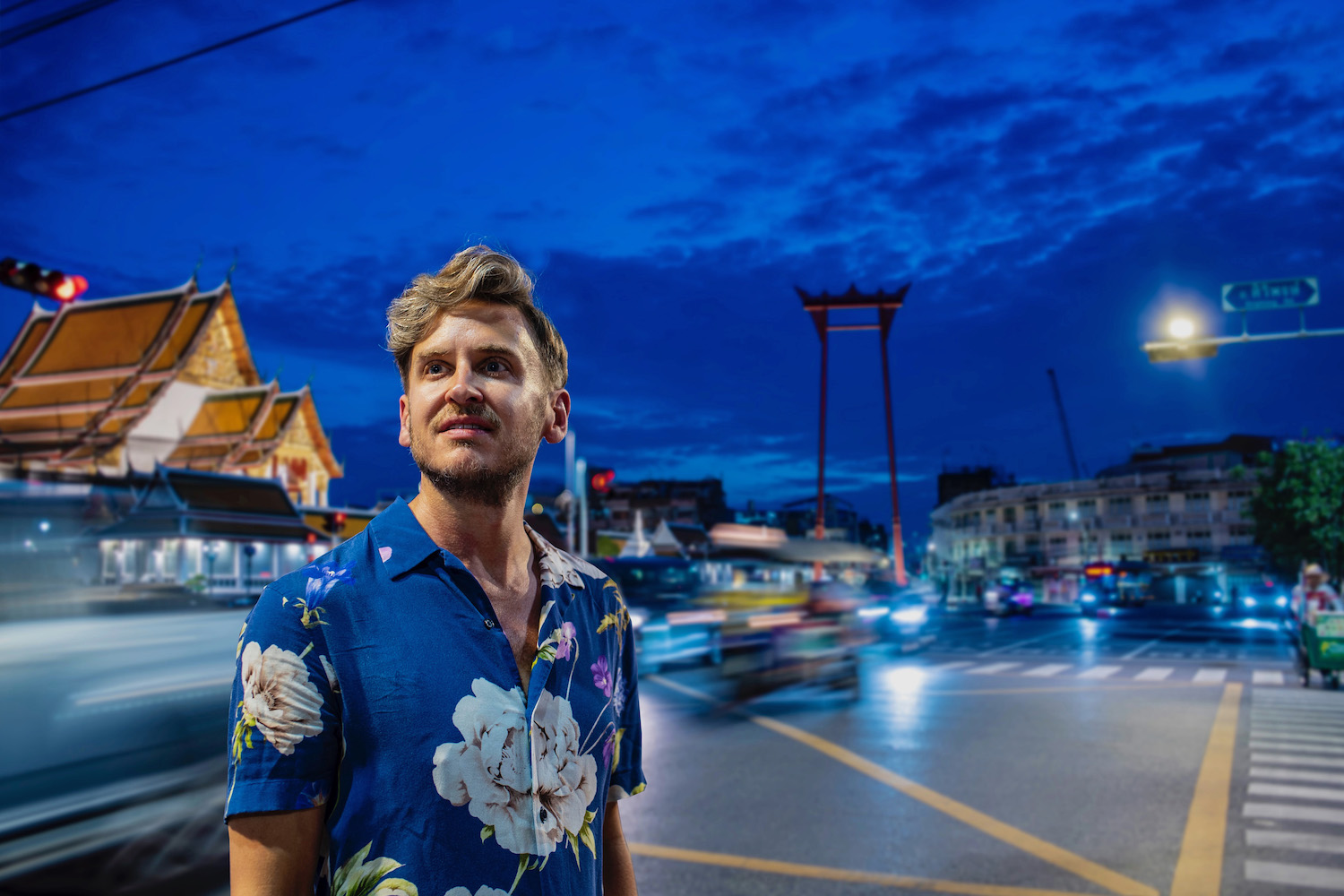
A couple weeks before my trip, reading one of countless thinkpieces about how predictably tumultuous Donald Trump’s second term has been, I came across something rare in such journalism: An actual definition of fascism.
Among its key pillars is an imagined past, which in almost all cases is imagined as having been much better than it was when it was the present.
I thought about this as I made my way through the narrow sub-sois of Silom to the laundromat, and how the way I saw the 15 years I’ve now spent exploring Bangkok in my mind’s eye might differ from the reality of what I actually lived.
The reality of the past is that I very happily left Bangkok in June 2019, and probably could’ve left a year earlier and been just as happy.
But at the end of almost every trip since, I look back from the void of the immigration checkpoint at Suvarnabhumi through a rose-colored filter, and become obsessed (sometimes for hours, sometimes for days or even weeks) with the fantasy of moving back again one day.
Which is why, in a way, the terrible morning I had my second-to-last day in Thailand was such a blessing: Half a dozen minor inconveniences slowly snowballed into an anxiety attack that, even if I hadn’t nearly been hit by a bus going full speed through a “protected” pedestrian crossing, might’ve seen me leave a whole day earlier.
It was a small step toward defeating the fascism of my own mind, lest I think back too fondly on the Siam Tulips or the not-so-blue roofed temple of Udon Thani, or my rainy night beneath the neon lights of Chinatown.
As I sat in my room on my final afternoon in Bangkok for now, enjoying a view that no one besides constriction workers and cleaners would see for at least another year, I saw things for what they were: The sky to the west was once again a black hole, but shades of delightful grey hovered above the eastern horizon.



